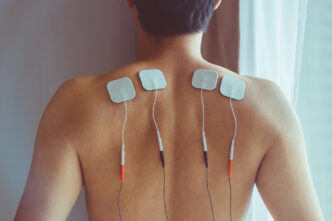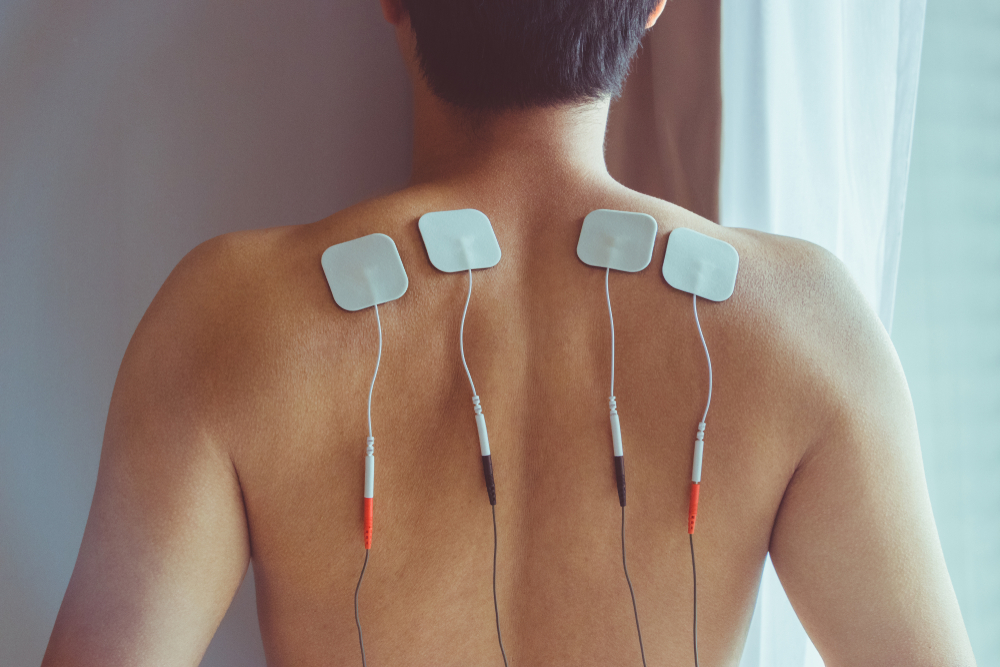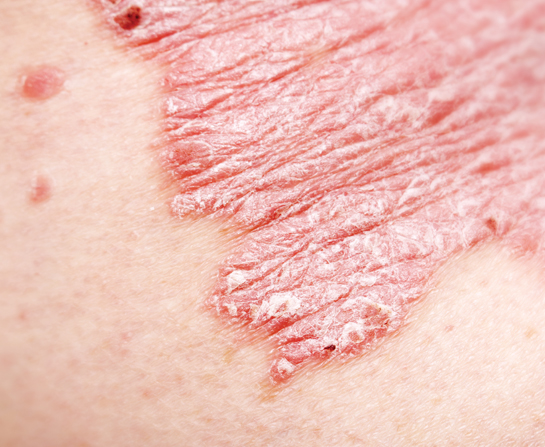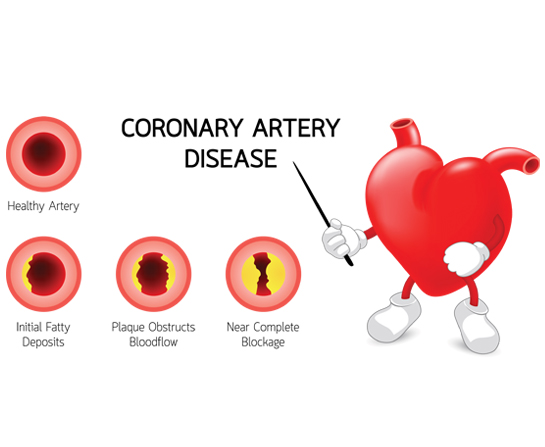Transcutaneous electrical nerve stimulation (TENS) is a pain-relief method that uses mild electrical currents delivered through electrodes on the skin. It aims to reduce discomfort by stimulating nerves and promoting the body’s natural pain-blocking mechanisms.
WORDS KIMBERLEY LOOI
 FEATURED EXPERT FEATURED EXPERTKIMBERLEY LOOI Chiropractor and Founder Kim’s Chiropractic |
TENS stands for transcutaneous electrical nerve stimulation, which sounds complicated but is actually quite straightforward.
- “Transcutaneous” simply means “through the skin”.
- Hence, TENS is about electrical stimulation through the skin.
- It that works without needles or invasive procedures.
The therapy uses a small, battery-powered device about the size of a smartphone that sends gentle electrical currents through adhesive pads placed directly on your skin.
HOW DOES TENS WORK?
These currents help reduce pain through two main mechanisms:
- They interrupt pain signals being sent to your brain.
- They stimulate your body to release its own natural pain-relieving chemicals called endorphins.
- The endorphins can continue working for hours after the TENS unit is switched off to provide pain relief.
Does TENS hurt? Is It Painful?
- Most patients describe the sensation as a light tingling or gentle pulsing feeling that gradually eases their discomfort.
- The intensity is completely adjustable, so you can find the level that provides relief without being uncomfortable.
WHO BENEFITS THE MOST FROM TENS?
It is particularly effective for:
- Nerve-related pain or neuropathic pain
- Arthritis and joint stiffness
- Chronic conditions like persistent low back or neck pain
- Post-surgical pain during recovery
- Injuries that need ongoing pain management
- Muscle pain and tension
There are no needles, no medications, and no significant side effects.
Hence, TENS can be a suitable complementary treatment for people with the above conditions.
TENS AS A COMPONENT OF A COMPREHENSIVE PAIN MANAGEMENT PLAN
- TENS provides short-term pain relief by calming nerve activity.
- Other treatments like physiotherapy focus more on correcting the root cause of your pain.
In that sense, TENS is like a supportive tool that help manage symptoms while other treatments address the underlying problem.
- For example, if you have chronic back pain, TENS can help control your discomfort while you work on strengthening exercises and posture correction through physiotherapy.
The best outcomes often come from using TENS as part of a comprehensive care plan rather than relying on it as a standalone treatment. This integrated approach allows you to manage your pain effectively while also working toward long-term solutions.
HOW FAST CAN YOU ACHIEVE PAIN RELIEF?
- Most people feel benefits within the first few minutes of starting a session.
- The duration of pain relief varies depending on your specific condition – some patients experience relief for a few hours, while others find the effects last up to a day or even longer.
With regular use, many patients notice better consistency in their pain control. It is like training your nervous system to be less sensitive to pain signals over time.
HOW LONG DOES ONE NEED TO USE THE TENS UNIT?
- Sessions can last anywhere from 15 minutes to several hours, depending on your needs and comfort level.
- You read, watch television, or even do light activities in the meantime.
HOME USE
- Many patients can safely use a TENS unit at home once they understand how to properly place the electrode pads and adjust the settings.
- This gives you much more control over your pain management routine.
- You can also address any discomfort as it arises.
However, Make Sure You Know How to Use the TENS Unit Correctly!
- Learning to use a TENS unit is simple, but getting initial professional guidance is highly recommended to ensure safe and effective use.
- Knowing where to place the electrodes and how to adjust the intensity settings makes all the difference between effective treatment and ineffective use.
Safety Considerations and Precautions
TENS therapy is remarkably safe when used properly, but there are important precautions to be aware of.
You should not use TENS if you:
- Use a pacemaker or other implanted electronic device
- Have epilepsy or seizure disorders
- Are pregnant
- Have over-broken, infected, or irritated skin
- Your pain is near the heart area
SIDE EFFECTS
When used according to instructions, the risks are minimal. The electrical current is very gentle – much less than what you would feel from static electricity.
The most common side effect is mild skin irritation where the electrode pads are placed, usually from the adhesive or from using the unit for extended periods.
This can typically be avoided by moving the pad placement slightly or taking breaks between sessions.
IN CONCLUSION
If you are dealing with persistent pain and are interested in exploring non-invasive options, TENS therapy is definitely worth discussing with your healthcare provider.
They can help determine whether it is appropriate for your specific condition and guide you through proper usage to maximize the benefits.
Remember, effective pain management is rarely about finding one perfect solution – it is about creating a personalized plan that addresses both your immediate comfort and your long-term health goals.
| This article is part of our series on evidence-based complementary and alternative treatment. |










